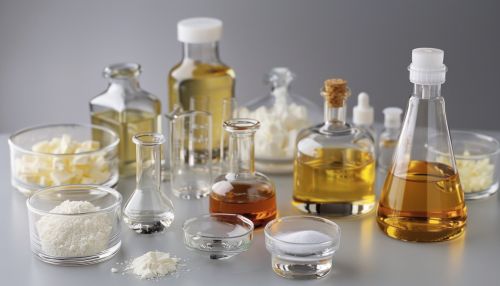Biochemicals
Introduction
Biochemicals are compounds that are involved in chemical reactions that occur in living organisms. These substances play a critical role in biochemistry, the study of chemical processes within and relating to living organisms. Biochemicals can be complex, like proteins, or relatively simple, like water, and they are essential to all forms of life.
Classification of Biochemicals
Biochemicals can be classified into four main categories: proteins, nucleic acids, carbohydrates, and lipids. Each of these categories has unique properties and functions within living organisms.
Proteins
Proteins are complex biochemicals that are composed of amino acids. They are involved in virtually every function of a cell, including structure, function, and regulation of the body's tissues and organs. Proteins are essential for life and are found in all living organisms.
Nucleic Acids
Nucleic acids are large molecules that store and transmit genetic information. The two main types of nucleic acids are deoxyribonucleic acid (DNA) and ribonucleic acid (RNA). DNA contains the genetic instructions used in the development and functioning of all known living organisms, while RNA translates the genetic information in DNA into proteins.
Carbohydrates
Carbohydrates are biochemicals that provide energy to living organisms. They are composed of carbon, hydrogen, and oxygen atoms and are classified into three groups: monosaccharides, disaccharides, and polysaccharides. Carbohydrates are a primary source of energy for most organisms.
Lipids
Lipids are a group of naturally occurring molecules that include fats, waxes, sterols, fat-soluble vitamins, monoglycerides, diglycerides, triglycerides, and phospholipids. Lipids are essential for energy storage, insulation, and cell membrane structure.


Role of Biochemicals in Metabolism
Biochemicals play a crucial role in metabolism, the set of life-sustaining chemical reactions in organisms. Metabolism is divided into two categories: catabolism, the breaking down of organic matter, and anabolism, the building up of components of cells such as proteins and nucleic acids.
Biochemical Techniques
Various techniques are used in the study and manipulation of biochemicals. These include chromatography, spectroscopy, centrifugation, and electrophoresis. Each of these techniques provides unique insights into the structure and function of biochemicals.
Biochemicals in Industry
Biochemicals have a wide range of applications in various industries, including pharmaceuticals, food and beverage, agriculture, and cosmetics. They are used in the production of drugs, food additives, fertilizers, and cosmetic products, among others.
